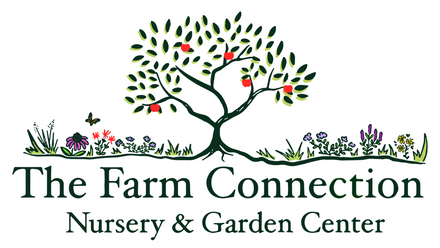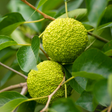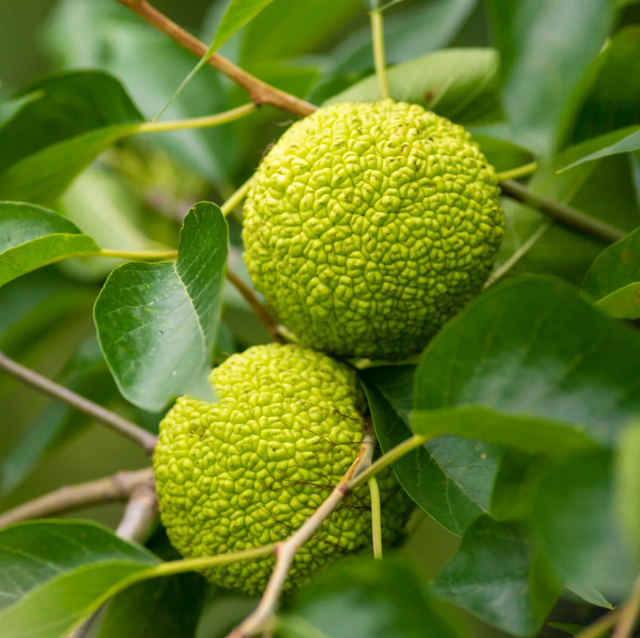Osage Orange, Bare Root
Living Fence & Shelter Tree with Historic Utility
Osage Orange, Bare Root - Bare Root / 6-18" Seedling is backordered and will ship as soon as it is back in stock.
Couldn't load pickup availability
Delivery and Shipping
Delivery and Shipping
Make sure to thoroughly review our entire "Shipping, Returns, Refunds, and Our Guarantee" page for all relevant details about ordering from our store.
Making a purchase from our store constitutes an agreement to all the conditions outlined in those policies.
We appreciate your support and look forward to being your favorite plant provider!
Subscribe to our newsletter
Sign up for exclusive offers.
Osage Orange (Maclura pomifera)
Osage Orange is a rugged, fast-growing native tree known for its dense wood, unique fruit, and historical use as a natural fence before barbed wire. Native to the Red River region of Texas, Oklahoma, and Arkansas, this thorny deciduous tree has become naturalized across much of the U.S. Valued for its rot-resistant wood, wildlife shelter, and utility in windbreaks, hedgerows, and erosion control, Osage Orange is a multifunctional species well-suited for regenerative agriculture, silvopasture edges, and rewilding projects where tough, adaptable plants are needed.
Key Characteristics
-
Dense shelter and nesting cover for wildlife
The dense, thorny branches create excellent habitat and protection for birds, small mammals, and pollinators. It is especially valuable in hedgerow and shelterbelt plantings where wildlife corridors are needed. -
Traditional fencing and durable wood
Historically used by Indigenous peoples and settlers for archery bows, fence posts, and tool handles, Osage Orange wood is extremely dense and rot-resistant. Its long-lasting utility continues in permaculture systems as a living fence or coppiced boundary. -
Excellent hedgerow or windbreak species
Osage Orange grows quickly, withstands pruning, and forms impenetrable thickets when planted closely and trimmed. Ideal for use in windbreaks, field borders, or livestock fencing in silvopasture systems. -
Soil-stabilizing roots for erosion control
Its deep, spreading roots make Osage Orange useful for stabilizing soils on slopes or degraded land. It tolerates a wide range of soils, including poor and compacted ground. -
Fruit provides ecological and historical interest
Though not typically consumed by modern wildlife (or humans), the grapefruit-sized fruits are fascinating remnants of a time when large Pleistocene mammals—like mastodons and giant ground sloths—may have dispersed them. Squirrels occasionally eat the seeds.
Product Details
- Native range: South-central U.S.; naturalized widely across the Midwest and East
- Plant life cycle: Deciduous Tree
- Sun requirements: Full sun to partial shade
- Soil requirements: Medium-dry to medium; tolerant of poor and compacted soils
- Mature height: 30–50 feet
- Bloom time: Late spring
- Bloom color: Inconspicuous green (dioecious; male and female flowers on separate trees)
- USDA Hardiness zones: 4–9
Osage Orange is a resilient and multifunctional tree ideal for hedgerows, erosion control, and natural fencing. It brings historic utility, ecological shelter, and soil regeneration to modern regenerative landscapes.
-
Sun RequirementsFull Sun, Part Sun/Shade
-
Soil RequirementsMedium, Medium-Dry
-
Bloom ColorGreen, Yellow
-
Bloom TimeMay, June
-
USDA Hardiness ZonesZone 4, Zone 5, Zone 6, Zone 7, Zone 8, Zone 9+
-
Native StatesArkansas, Oklahoma, Texas
Payment & Security
Payment methods
Your payment information is processed securely. We do not store credit card details nor have access to your credit card information.




